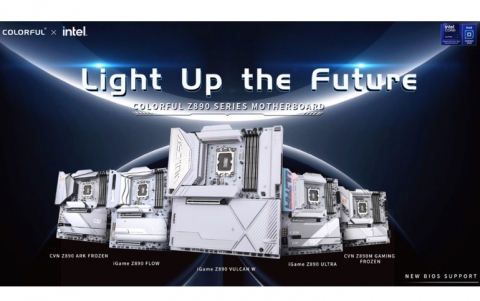High Speed Re-Writing Format
4. The new Orange Book part III extension
Review Pages
2. CD-R versus CD-RW technology
3. CD-R versus CD-RW technology - The "differences"
4. The new Orange Book part III extension
5. Packet writing and BURN-Proof
6. Info about Yamaha CDR-W drives
The new Orange Book part III extension
 Philips recently introduced a new extension to the original Orange Book specifications.
Part III, volume 2 is now part of the extended "standard". And it
concerns reading and recording of the new high-speed CD-RW media. Will this
new standard change the way we use RW recording and especially packet writing?
As you all know almost every new CD-R drive sold today supports both CD-R and
CD-RW formats.
Philips recently introduced a new extension to the original Orange Book specifications.
Part III, volume 2 is now part of the extended "standard". And it
concerns reading and recording of the new high-speed CD-RW media. Will this
new standard change the way we use RW recording and especially packet writing?
As you all know almost every new CD-R drive sold today supports both CD-R and
CD-RW formats.
- The features of the new specifications:
We reproduce below from an original Philips leaflet (with some additions,
corrections and clarifications):
- Higher capacity: CD-RW with fixed-packet size
can offer more than 550 MB of randomly overwritable storage capacity.
- Highest possible transfer rate during recording: by increasing the max speed
to 10x, high transfer rates up to 1.5 MB/sec can be achieved
- Shortest possible access time: allowing CAV mode avoids spin-up/spin-down
time losses during medium access.
- By more than doubling the maximum write speed and including CAV read/write
capabilities, the high-speed CD-RW standard sets new milestones for removable
storage media.
In the following picture (due to Philips) a single recording signal is represented both at the inner part of a disk and at its outer surface. It is easily seen that if CAV recording mode is allowed the laser has to adjust the 0/1 pulses throughout the disk-recording phase. At the outer part of the disk, where bits are to be recorded at a higher rate, these pulses are more rapid:

The short pulses at the outer place of a disk can be reliably applied only if the underlying medium characteristics permit this. (Provided the laser head has also been designed by taking this into account!) The improved chemical synthesis of all higher speed RW disks assures that this will be now possible. For all this to be achievable new media formulations have been defined and recording strategies are to be adopted.
So the natural question arises:
What is the backward compatibility of high-speed CD-RW?
Because of time-constraints concerning the chemical reactions occurring during recording and the synthesis of the used materials, CD-RW media designed for high speed rewriting (in general) can not be properly rewritten at current 1x~4x speed drives. Subsequently, several precautions have been adopted and implemented into the new specifications.
Media of the new type are identified by a new subtype setting in ATIP (Absolute Time in Pregroove: this is the place onto a disk's surface designed for helping the laser-head into following the correct spiral path while recording---it is also used for storing critical media characteristics to assist the drive into correctly identifying the inserted blank media and consequently properly adjusting the laser power for recording).
Thankfully, many current drives do not recognize this new setting. Some of them will not even attempt writing on a disk of this type. Some (regretfully) might try doing this, though. In this case they will choose their default speed and writing strategy. This is most of the time and the highest possible one (4x). Data lose might result in such a case
To take care for this case, in the new media the ATIP location (where disk information concerning speed and writing strategy is stored) has been moved onto a (slightly) different place to ensure that older drives will not recognize the newer disks and so they will not attempt writing on them. (Admittedly, a quite clever solution.)
It is furthermore expected that firmware upgrades offered by the original drive makers will force the latest 4x writers to correctly identify new higher-speed disks. It is even possible by adapting the drive's writing strategy in this case to enable current drives to record correctly on disks of the new type. Such upgraded drives can write at 4x with an adapted write strategy.
The following table (again due to Philips) summarizes the abilities of old and new drives:
|
Media Drive |
part III, vol 1, v1.0 |
part III, vol 1, v2.0 |
part III, vol 2, v0.9 |
|
2x drive |
2x |
2x |
reject for writing |
|
Current 4x drive |
2x |
1x, 2x, or 4x |
reject for writing |
|
Upgraded 4x drive |
2x |
1x, 2x, or 4x |
writes 4x only |
|
high-speed CLV drive 10x CAV drive all-speed-modes drive |
2x 2x 2x |
1x, 2x, or 4x 1x, 2x, or 4x 1x, 2x, or 4x |
any CLV 4x 10xCAV (32 Hz) any CLV 4x or 10xCAV |
- A First Conclusion
CD-ROM has replaced the floppy as standard medium for programs distribution.
CD-R has replaced the floppy and tape streamer as standard medium for back up
and archiving of home users.
CD-RW might be the right replacement for the floppy as a standard medium for temporary storage and data interchange. With the adoption of high speed RW recording this will certainly vastly improve in the near future.
We should be able, in the near future, to correctly measure and test the RW abilities of both new readers and recorders. The CDRInfo team is positioned into bringing this to its audience in the next round of both hardware and software tests. The improved recording speeds of new media/drive combinations following the new standard has further commissioned us into doing this…
Review Pages
2. CD-R versus CD-RW technology
3. CD-R versus CD-RW technology - The "differences"
4. The new Orange Book part III extension
5. Packet writing and BURN-Proof
6. Info about Yamaha CDR-W drives













